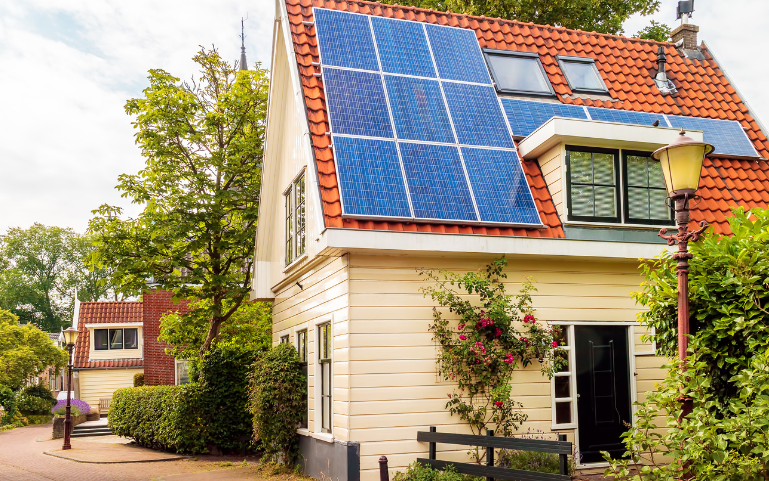
Sustainable Architecture: Designing Eco-Friendly Homes for a Greener Future
As the world becomes increasingly aware of the environmental impact of human activities, the demand for sustainable living solutions has never been greater. Architecture, as a significant contributor to energy consumption and resource use, plays a crucial role in shaping a greener future. Sustainable architecture focuses on designing eco-friendly homes that minimize their environmental footprint while maximizing energy efficiency, comfort, and aesthetics. In this blog, we will explore the principles of sustainable architecture and how they are applied in designing homes that are both environmentally responsible and beautiful.
What is Sustainable Architecture?
Sustainable architecture, also known as green architecture, is the practice of designing buildings that are environmentally friendly and resource-efficient throughout their life cycle. This approach considers everything from the materials used in construction to the energy consumed during the building's operation. The goal is to reduce the negative impact on the environment and human health while enhancing the quality of life for occupants.
Key principles of sustainable architecture include:
- Energy Efficiency: Reducing energy consumption through innovative design, insulation, and the use of renewable energy sources.
- Water Conservation: Implementing water-saving technologies and systems that minimize water waste.
- Sustainable Materials: Choosing materials that are renewable, recycled, or have a low environmental impact.
- Waste Reduction: Minimizing construction waste and promoting recycling and reusing materials.
- Healthy Indoor Environment: Ensuring good indoor air quality, natural lighting, and non-toxic materials for a healthier living space.
Designing Eco-Friendly Homes: Key Elements
When designing eco-friendly homes, architects incorporate various elements to ensure that the buildings are sustainable, energy-efficient, and environmentally responsible. Here are some of the key components of sustainable home design:
1. Passive Design Strategies
Passive design involves creating homes that naturally regulate temperature, lighting, and ventilation without relying heavily on mechanical systems. Key strategies include:
- Orientation and Layout: Positioning the home to take advantage of natural light and wind patterns, reducing the need for artificial lighting and heating/cooling systems.
- Thermal Mass: Using materials that absorb and store heat during the day and release it at night, helping to maintain a stable indoor temperature.
- Insulation and Sealing: Ensuring proper insulation and sealing to reduce heat loss in winter and keep the home cool in summer, leading to lower energy consumption.
2. Renewable Energy Sources
Incorporating renewable energy sources into home design is a cornerstone of sustainable architecture. Solar panels, wind turbines, and geothermal systems can generate clean energy, reducing the home's reliance on fossil fuels. In addition, designing homes to be energy-efficient can significantly reduce the need for electricity and heating.
For example, installing solar panels on the roof can provide electricity, while solar water heaters can reduce the energy needed for hot water. Wind turbines can also be used in areas with strong wind patterns to generate additional power.
3. Sustainable Building Materials
The choice of building materials has a significant impact on the environment. Sustainable architecture prioritizes materials that are renewable, recycled, or have a low environmental impact. Examples of sustainable materials include:
- Bamboo: A fast-growing, renewable resource that can be used for flooring, cabinetry, and even structural elements.
- Recycled Steel: Using recycled steel in construction reduces the demand for new steel, which is energy-intensive to produce.
- Reclaimed Wood: Salvaging and reusing wood from old buildings reduces the need for new timber and helps preserve forests.
- Low VOC Paints and Finishes: Choosing paints, adhesives, and finishes that emit low levels of volatile organic compounds (VOCs) improves indoor air quality and reduces health risks.
4. Water Conservation Techniques
Water conservation is a critical aspect of sustainable home design. Architects incorporate various strategies to reduce water consumption and manage water efficiently, such as:
- Rainwater Harvesting: Collecting and storing rainwater for use in irrigation, flushing toilets, and other non-potable applications.
- Greywater Recycling: Reusing water from sinks, showers, and laundry for landscaping or toilet flushing.
- Low-Flow Fixtures: Installing low-flow faucets, showerheads, and toilets to reduce water usage without sacrificing performance.
5. Green Roofing and Landscaping
Green roofs and sustainable landscaping are essential elements of eco-friendly home design. Green roofs, which are covered with vegetation, provide insulation, reduce stormwater runoff, and improve air quality. Additionally, sustainable landscaping practices, such as xeriscaping (using drought-tolerant plants) and using native species, reduce water consumption and create habitats for local wildlife.
6. Smart Home Technology
Integrating smart home technology into sustainable architecture can further enhance energy efficiency and convenience. Smart thermostats, lighting systems, and appliances can be programmed to optimize energy use, reducing waste and lowering utility bills. For example, smart thermostats can learn your schedule and adjust the temperature accordingly, while smart lighting systems can turn off lights when rooms are not in use.
The Benefits of Sustainable Architecture
Investing in sustainable architecture offers numerous benefits for homeowners, communities, and the environment:
- Environmental Impact: Sustainable homes reduce carbon emissions, energy consumption, and waste, contributing to a healthier planet.
- Energy Savings: By using energy-efficient design and renewable energy sources, homeowners can significantly reduce their utility bills.
- Increased Property Value: Eco-friendly homes are becoming increasingly desirable, often commanding higher resale values.
- Healthier Living Environment: Sustainable homes promote better indoor air quality, natural lighting, and comfort, leading to improved well-being for occupants.
- Long-Term Durability: Sustainable materials and construction practices often result in more durable, low-maintenance homes that last longer and require fewer repairs.
Conclusion: Building for a Greener Future
Sustainable architecture is not just a trend; it is a necessary evolution in how we design and build homes. By prioritizing energy efficiency, renewable resources, and environmentally friendly practices, architects and homeowners can work together to create eco-friendly homes that minimize their impact on the planet while providing a comfortable and healthy living environment. As more people embrace the principles of sustainable architecture, we move closer to a greener, more sustainable future for all.

